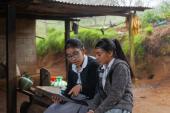Blog post
Transforming public procurement in education: a lesson on open contracting from Ukraine

Procurement and corruption in Ukraine’s education sector
When we looked into public procurement of the Department of Education of Poltava city (300,000 habitants in Ukraine) we noticed many direct contracts for window replacements in various schools of the city. Each contract had the same supplier and, at ±$59,990, were just below the competitive threshold of $60,000. 24 contracts for more than $1,000,000. It was obvious that something was wrong. After a brief analysis of the signed contracts, we identified that the average price per window replacement was about $760. A few calls to alternative companies and we received an estimate for the same services for $300. Acting on our advice, the new management team of the Department of Education conducted a competitive selection process to better gauge how much these services should cost. The result was impressive: $272 per window, almost 3 times cheaper.

Procurement data analysis of all Ukrainian educational institutions showed that more than 50% of all funding (±$500 million per year) goes to repairs & construction, with many cases similar to the above example in Poltava. School meals, which account for 20% of educational spending, face similar problems: single bid contracts, collusion, inflated prices and complaints from parents that school food is disgusting.
Public procurement is so inefficient and corrupt, parents are forced to pay a “voluntary” monthly fee to cover goods, works, and services that are supposed to be funded from their taxes, such as renovations in their classes, school meals, or purchases of equipment.
Reducing the risks of corruption
Public procurement is the number one corruption risk for governments according to the OECD, the UN, and the World Bank. With a global procurement market of about US$13 trillion, individual cases of misuse and waste amount to millions deviated from serving citizens to the pockets of the corrupt.
Open contracting can change that, by using open data to track, monitor and improve public contracts. Open contracting is transforming how business is done by making the public procurement process transparent and engaging stakeholders across government, business and civil society to collaborate on reforms.
Disclosing procurement data is the first step. The Open Contracting Data Standard guides governments on what data and documents to publish at each stage of the contracting process. It was created to support organizations trying to increase contract transparency, and allow deeper analysis of contracting data by a wide range of users.
The Data Standard has been implemented in more than 30 countries, from Colombia to Nigeria, and from Australia to the United Kingdom. Ukraine was one of the first countries to do so, building the Prozorro system. Thanks to this system, every citizen has the opportunity to check what was procured in their city, in the nearest hospital, school or even street. Civil society developed multiple contracting data tools like the map of repairs to change how procurement is done in the country. This opportunity to track and see how the government prioritizes spending in each neighbourhood is particularly critical when it comes to education.
In Ukraine, 91% of parents report that they are making monthly donations to schools to cover different needs like furniture or meals. But they usually don’t know that schools have already procured the goods, works or services that parents are being asked to pay for. Transparency International Ukraine, together with the biggest parent community “Parents SOS” and the Ministry of Education, developed an interactive tool to show What your school buys. This simple map allowed parents to understand whether their school is properly funded has secured enough food or has replaced old windows with public money. In 2020, this tool helped show whether schools had enough PPEs to guarantee the safety of staff and students during the quarantine. In addition, civil society developed a set of guidelines to not only monitor contracts but also set up feedback channels that ensure parents are able to report on whether government spending arrives in their local schools. Encouraging feedback and making sure this is used to implement effective reforms is the second, and often a more difficult step, of open contracting.
By applying open contracting principles and reducing the cost of window replacements from $760 to $272, or saving millions of dollars on school meals, you do not only eliminate corruption: you open a window of opportunity for better education. Imagine how education could be improved if children have good equipment, sit in warm and comfortable rooms, and eat tasty meals. With open contracting, we can make the first step in this direction.






